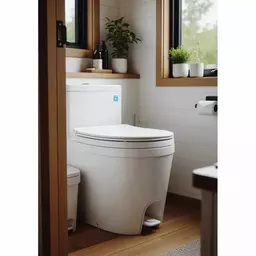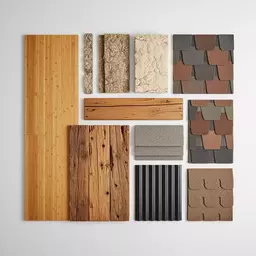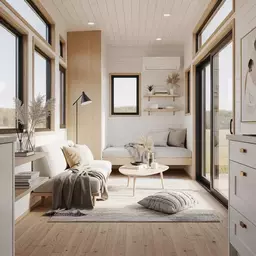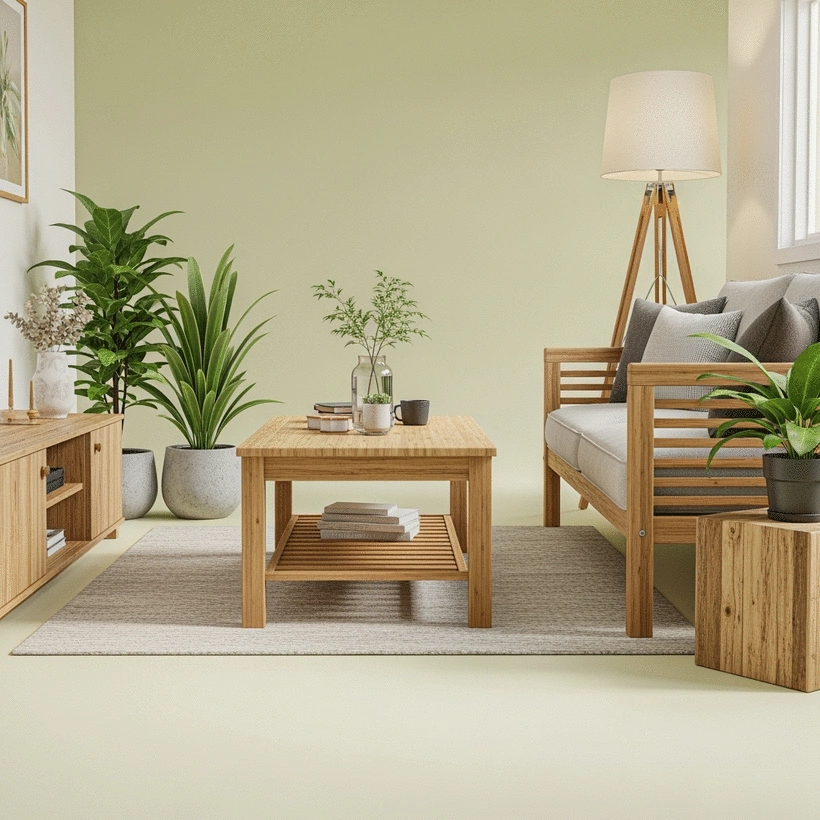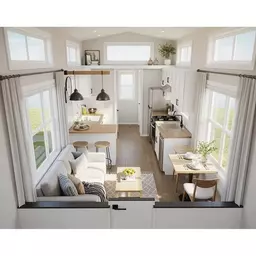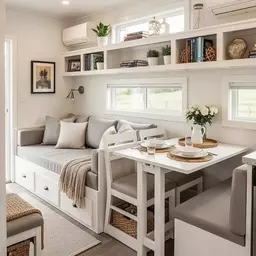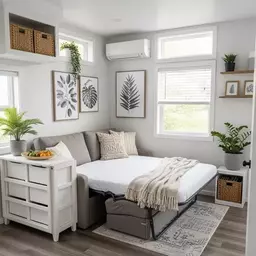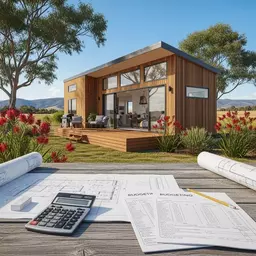Eco-Friendly Materials for Tiny Homes
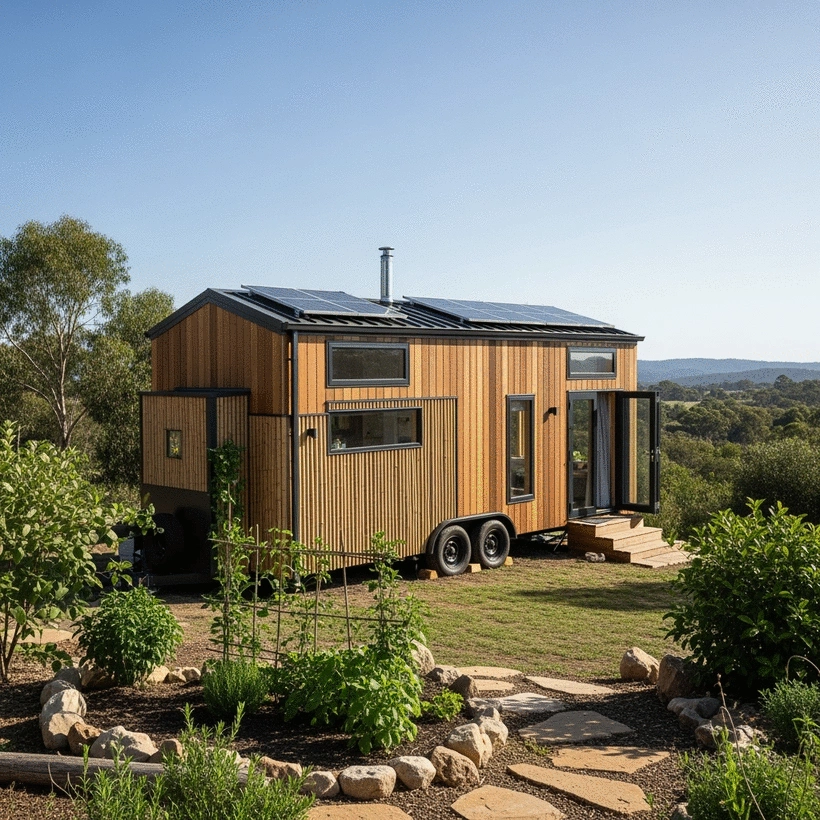
What if your home could reflect your values while also being kind to the planet? Embracing the tiny home movement opens the door to a sustainable lifestyle where every material choice counts. This guide will help you navigate the essential elements of eco-friendly living in compact spaces.
What You Will Learn
- Using eco-friendly materials reduces waste and promotes recycling.
- Tiny homes consume fewer resources, leading to a smaller environmental footprint.
- Sustainable materials enhance indoor air quality and overall health.
- Investing in eco-friendly choices can lead to long-term savings through lower maintenance costs.
- Embracing minimalism in design can create unique and charming living spaces.
- Community engagement and local sourcing strengthen sustainable practices.
The Pillars of Sustainable Tiny Home Living
Luxe Tiny Homes champions sustainable living through eco-friendly materials and practices. The visual below highlights the core benefits and reasons to choose a tiny home for a greener lifestyle.
Importance of Sustainable Practices
- ✓ Reduced Waste: Minimizes waste and promotes recycling.
- ✓ Energy Efficiency: Lower utility bills due to less energy usage.
- ✓ Healthier Spaces: Fewer harmful chemicals, better air quality.
- ✓ Long-Term Savings: Despite upfront costs, saves money over time.
Why Tiny Homes for Eco-Living?
- » Less Resource Consumption: Requires fewer materials to build and maintain.
- » Lower Energy Usage: Smaller footprint means less energy for heating/cooling.
- » Flexibility & Mobility: Often movable, allowing for flexible living.
- » Connection to Nature: Encourages a more mindful lifestyle closer to nature.
Understanding Eco-Friendly Materials for Tiny Homes in Australia
As we delve into the world of tiny homes, it’s essential to understand the significance of using eco-friendly materials. At Luxe Tiny Homes, we believe that sustainable living begins with the choices we make in our building practices. By selecting materials that are not only durable but also environmentally responsible, we can create spaces that reflect our commitment to both minimalism and the planet.
Embracing sustainable building practices is not just about reducing our carbon footprint; it’s about fostering a lifestyle that prioritizes health, sustainability, and beauty. When we build with eco-friendly materials, we contribute to a healthier environment while creating homes that enhance our quality of life. Are you curious about how tiny homes can lead the way in eco-friendly living? Let’s explore this further!
Importance of Sustainable Building Practices
Understanding the importance of sustainable building practices is crucial for anyone considering a tiny home. Research published in F1000Research highlights that green building practices are integral to environmental preservation. Here are a few key reasons why they matter:
- Reduction of Waste: Using sustainable materials minimizes waste and promotes recycling.
- Energy Efficiency: Eco-friendly homes often use less energy, leading to lower utility bills.
- Healthier Living Spaces: Sustainable materials typically have fewer harmful chemicals, improving indoor air quality.
- Long-Term Savings: Despite potentially higher upfront costs, sustainable choices often result in savings over time.
By prioritizing sustainable practices, we not only create a positive impact on the environment but also cultivate a lifestyle that aligns with our values. This commitment can greatly influence our community and inspire others to do the same.
Why Choose Tiny Homes for Eco-Friendly Living?
So, why should you consider a tiny home for your eco-friendly lifestyle? Tiny homes offer several advantages that resonate deeply with sustainability seekers. As discussed in the International Journal of Business and Social Science, tiny houses promote economic, environmental, and social sustainability. Here are the top reasons:
- Less Resource Consumption: Tiny homes require fewer materials to build and maintain.
- Lower Energy Usage: Smaller square footage means less energy is needed for heating and cooling.
- Flexibility and Mobility: Many tiny homes are designed to be movable, allowing for flexible living arrangements.
- Connection to Nature: Tiny homes often encourage living closer to nature, promoting a more mindful lifestyle.
With these benefits in mind, it’s clear that tiny homes are a fantastic option for those looking to embrace a more sustainable way of living. They challenge us to rethink our relationship with space and resources, inviting us to live more intentionally.
Exploring Top Eco-Friendly Materials for Your Tiny Home
Once you've decided to embark on your tiny home journey, the next step is selecting eco-friendly materials that will form the foundation of your new living space. By making informed choices, you can ensure that your home aligns with both your aesthetic and your ecological values. Let’s dive into some of the best materials available!
Interactive Poll
As you consider building your tiny home, what eco-friendly feature excites you the most? Share your thoughts with us!
Summarizing the Benefits of Eco-Friendly Materials for Tiny Homes
At Luxe Tiny Homes, we believe that choosing eco-friendly materials is not just a trend; it’s a profound commitment to a sustainable future. By selecting materials that are kind to our planet, we open the door to a living space that reflects our values of minimalism and sustainability. Here are some key benefits that underscore the importance of eco-friendly materials in your tiny home journey:
- Reduced Environmental Impact: Eco-friendly materials often require less energy to produce and result in fewer pollutants, contributing to a healthier ecosystem.
- Enhanced Health and Comfort: Natural materials like reclaimed wood and low-VOC paints improve indoor air quality, creating a safer environment for you and your family.
- Cost Efficiency: Many sustainable materials are durable and require less maintenance, ultimately saving you money in the long run.
- Unique Aesthetic Appeal: Using materials like bamboo or reclaimed wood adds character and charm, ensuring your tiny home stands out.
Choosing eco-friendly materials for your tiny home isn't just about aesthetics—it's about embracing a lifestyle that prioritizes environmental stewardship and promotes well-being.
Key Takeaways on Sustainable Building Practices
As we wrap up our discussion on sustainable building practices, it's essential to remember a few vital points that will guide you on your tiny living journey:
- Focus on sourcing materials that are renewable and recyclable.
- Consider the lifecycle of materials, from production to disposal.
- Incorporate energy-efficient features that minimize your carbon footprint.
- Embrace community resources and local suppliers to support sustainable practices.
Taking these steps can significantly impact both your home and the wider community, encouraging others to follow suit in the pursuit of eco-friendly living.
Encouraging a Shift Towards Eco-Friendly Living in Australia
At Luxe Tiny Homes, we are passionate about inspiring Australians to embrace a more sustainable lifestyle. The shift towards eco-friendly living is not just beneficial for our health but also for the environment. To foster this change, we can:
- Engage in community workshops that highlight sustainable practices.
- Share success stories from tiny home owners who have made the switch.
- Promote local events focused on sustainability and minimalism.
- Support policies and initiatives that favor green building practices.
By encouraging one another and sharing insights, we can create a ripple effect that transforms the way Australians think about their homes and lifestyles.
Next Steps for Your Sustainable Tiny Home Journey
Finding Reliable Builders and Suppliers in Australia
Choosing the right builders and suppliers is crucial for the success of your tiny home project. Look for those who prioritize sustainable practices and have a solid reputation in the market. Here are some tips to help you find the best resources:
- Research local builders with experience in tiny homes and eco-friendly materials.
- Ask for recommendations from fellow tiny home enthusiasts or community groups.
- Check online reviews and testimonials to gauge customer satisfaction.
- Visit exhibitions or trade shows focused on sustainable building to connect with suppliers.
By carefully selecting your partners in this journey, you’re setting up your tiny home project for success.
Resources for Further Learning and Exploration
As you continue on your path toward building a sustainable tiny home, seeking knowledge and inspiration is vital. Here are some valuable resources that can empower you:
- Books on minimalist living and sustainable design.
- Online courses focusing on eco-friendly construction techniques.
- Websites and blogs dedicated to tiny home living, like LuxeTinyHomes.com.au.
- Local workshops that teach sustainable building practices.
By engaging with these resources, you’ll be well-equipped to make informed decisions that align with your values and vision for a sustainable future.
Frequently Asked Questions About Eco-Friendly Tiny Homes
- What are the main benefits of building an eco-friendly tiny home?
- Eco-friendly tiny homes offer benefits such as reduced waste, lower energy consumption, healthier indoor air quality, and long-term cost savings due to durability and less maintenance. They also encourage a lifestyle closer to nature and promote sustainable living.
- How do tiny homes contribute to sustainability?
- Tiny homes contribute to sustainability by requiring fewer materials for construction and maintenance, consuming less energy for heating and cooling due to their smaller footprint, and often encouraging a more mindful lifestyle with less resource consumption.
- What kind of materials are considered eco-friendly for tiny homes?
- Eco-friendly materials include those that are renewable, recyclable, non-toxic, and have a low environmental impact during production and disposal. Examples include reclaimed wood, bamboo, recycled steel, natural insulation (like wool or cotton), and low-VOC paints.
- Can sustainable building practices save money in the long run?
- Yes, despite potentially higher upfront costs for some eco-friendly materials or technologies, sustainable choices often lead to significant long-term savings through reduced utility bills, lower maintenance requirements, and increased durability of materials.
- Where can I find reliable builders for eco-friendly tiny homes in Australia?
- To find reliable builders, research local companies with experience in sustainable tiny home construction, seek recommendations from tiny home communities, check online reviews, and visit trade shows focused on green building practices.
Recap of Key Points
Here is a quick recap of the important points discussed in the article:
- Reduction of Waste: Using sustainable materials minimizes waste and promotes recycling.
- Energy Efficiency: Eco-friendly homes often use less energy, leading to lower utility bills.
- Healthier Living Spaces: Sustainable materials typically have fewer harmful chemicals, improving indoor air quality.
- Long-Term Savings: Despite potentially higher upfront costs, sustainable choices often result in savings over time.
- Less Resource Consumption: Tiny homes require fewer materials to build and maintain.
- Connection to Nature: Tiny homes often encourage living closer to nature, promoting a more mindful lifestyle.
